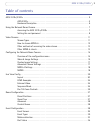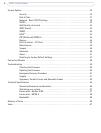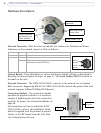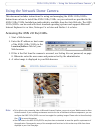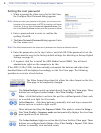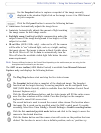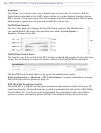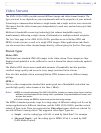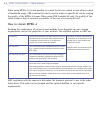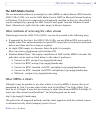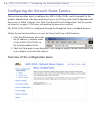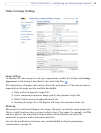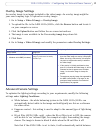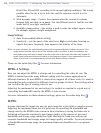
11
AXIS 231D+/232D+ - Video Streams
Video Streams
The AXIS 231D+/232D+ provides several different image and video stream formats. The
type you want to use depends on your requirements and on the properties of your network.
Unicasting is communication between a single sender and a
single receiver over a network.
This means that the video stream goes independently to each user, and each user gets their
own stream.
Multicast is bandwidth-conserving technolog
y that reduces bandwidth usage by
simultaneously delivering a single stream of information to multiple network recipients.
The Live View page in the AXIS 231D+/232D+
provides access to Motion JPEG and
MPEG-4 video streams, as well as to single JPEG images. Other applications and clients
can also access these video streams/images directly, without going via the Live View page.
Stream Types
Motion JPEG
This format uses standard JPEG still images in the vi
deo stream. These images are then
displayed and updated at a rate sufficient to create a stream that shows constantly updated
motion.
The Motion JPEG stream uses considerable
amounts of bandwidth, but also provides
excellent image quality and access to every image contained in the stream.
Note also that multiple clients
accessing Motion JPEG streams can use different image
settings.
MPEG-4
This is a video compression standard that makes good
use of bandwidth, and which can
provide high quality video streams at less than 1 Mbit/s.
Notes:
• MPEG-4 is licensed technology. The AXIS 231D+/232D+ includes one viewing client license. Installing
additional unlicensed copies of the viewing client is prohibited. To purchase additional licenses, con-
tact your Axis reseller.
• All clients viewing the MPEG-4 stream must use the same image settings.
The MPEG-4 standard provides scope for a large range of different coding tools for use by
various applications in different situations, and the AXIS 231D+/232D+ provides certain
subsets of these tools. These are represented as Video object types, which are selected for
use with different viewing clients. The supported video object types are:
• Simple
- sets the coding type to H.263, as used by QuickTime™, for example.
• Ad
vanced Simple - sets the coding type to MPEG-4 Part 2, as used by AMC
(AXIS Media Control).



